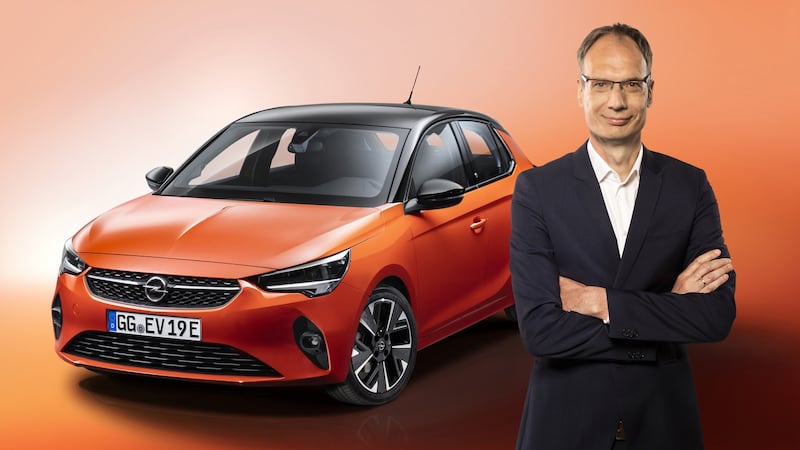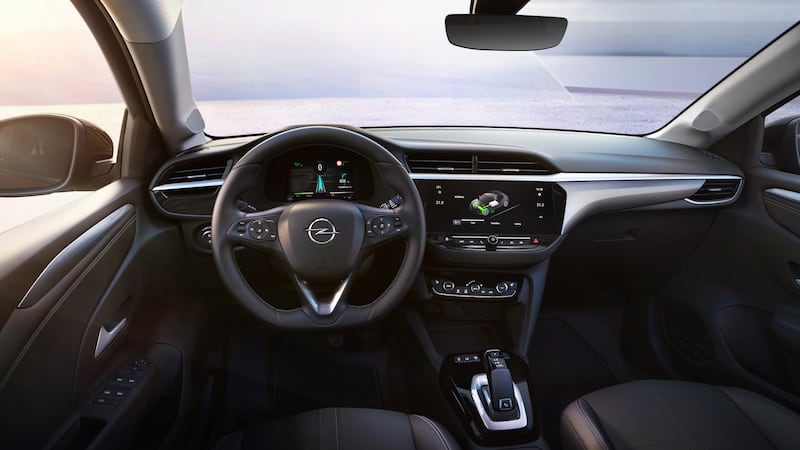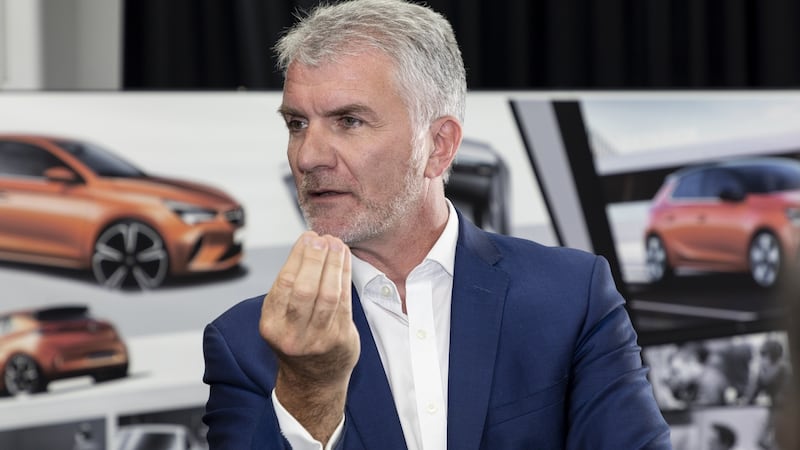There's an odd air at Opel head office in Germany these days: optimism.
After 88 years of ownership by General Motors, the takeover by French rival PSA in 2017 was widely greeted with a big dose of scepticism in media circles.
It was hardly surprising. GM clearly wanted out of Opel for several years with no luck finding a suitable suitor, and it wasn’t that long ago PSA was going through its own existential crisis.
Opel hadn’t turned a profit since 1999, was weighed down with monumental pension obligations in Germany and a jaded model range, dependent on market segments that were out of fashion in the age of crossovers and SUVs.
Two years on and Opel is back in the black, reporting an impressive operating income last year. It has a new pipeline of models on the way, based on a simplified engineering strategy.
The cross-cultural relations between the French and Germans seem to be on a stronger footing than in the days when orders came direct from Detroit. For a start PSA and Opel are primarily focused on the same customer market: Europe. That is bound to help.

According to Opel chief executive, Michael Lohscheller: “We have become a completely different company in the last two years. After losses of 20 years we achieved our highest profit in the history of the Opel. You can say that doesn’t mean a lot, but I would say for a company that’s 157 years old, it means a lot.
“It’s a good improvement, and that’s before we have started with new cars like the Corsa. The industry is changing; every other week you hear about integrations and mergers. I can say from an Opel perspective we feel very well integrated into PSA and I’m actually quite proud that this is an example where German-French integration has worked well, has delivered very strong results.”
Yet the positivity that echoes around the Rüsselsheim head office is all the more surprising when you consider what the takeover meant for those working on the Corsa project.
The takeover meant that three years of hard work on the next generation of Opel's best-selling car went straight in the bin. The teams of designer Mark Adams and Frank Jordan, director of innovation and advanced engineering, had been working on a new car based on parts from the General Motors family. Prototypes were being created. However, the takeover meant GM-owned patents for too many of the parts, and PSA understandably wanted to use their own rather than pay the former parent for licenses.
The French bosses ruled the new Corsa had to be built on the same platform as the new Peugeot 208 and Citroën DS3 Crossback. It meant a redesign of the car and a new plan for the engineering. The fact we still have a new Corsa turned around in such a quick time, with little or no carryover from the previous project, speaks volumes for the endeavours of the team at Opel. According to Adams and Jordan, it also meant they got straight to work with their French counterparts.
The end result is an impressively smart supermini. Adams says the move by mainstream buyers into crossovers has meant more opportunities to spruce up the Corsa. “Buyers who want practicality, easier access and a higher seating position are opting for small crossovers like the Mokka, so that means with Corsa we can focus a bit more on the buyers looking for sporty, fun superminis.”
While it is still clearly from the Corsa lineage, various design “tricks” have been used to make the car look lower and longer than it actually is, such as the optional two-tone roof.
Lighting system
The new Corsa also boasts impressive new tech for the supermini class. Opel is making much of the inclusion of its highly-regarded Matrix LED lighting system on the car. They are right to talk this up, for buyers often get too fixated on the infotainment systems and miss out on some real life-saving innovations such as the advances in lighting over the last five years. As for the Corsa’s infotainment, while the digital screen layout is similar to that in the latest PSA cars, Opel differs from its French cousins in keeping dial and knob controls for key functions such as volume control and air-con. It’s a sensible move and one lesson the French should heed from their new German partners.

Adams is eager to point to the sporty credentials inside the car as well.
“The new layout and seating position means you sit in the new Corsa, rather than on it, which was something we noticed in the previous generations. It means the driver feels more engaged with the car.”
Power comes from either a 1.2-litre petrol or a 1.5-litre diesel engine, combined with either a six-speed manual or eight-speed auto transmission. The big news, however, is the arrival of the fully electric Corsa-e. Combining a 50kW/h battery pack with a 100kW electric motor, the electric Corsa claims a range of 330km between charges. Opel has made a conscious decision not to make the electric version different from the rest of the range. Aside from the subtle “e” moniker and a different set of wheels, the car looks exactly the same as the petrol and diesel Corsas.

“One of the things we did early on in the development was test with our customer base whether they wanted something highly differentiated when you have an electric vehicle,” says Adams. “The big bottom line message from the vast majority of customers was ‘no, we don’t want anything quirky, or funny colours, we just want a great looking car that delivers with new technology’. And that’s what we’ve done.”
The battery pack is housed under the front and rear seats, giving the car a much lower centre of gravity than the petrol or diesel version, while boot space remains largely the same, aside from a few underfloor cubbyholes in the boot. It is also nippy around town, with a 0-50km/h time of just 2.8 seconds, though the 0-100km/h is noticeably slower at 8.1 seconds.
The electric Corsa is important to Opel for several reasons. For a start, it is its first truly mainstream fully electric model. Forget about the Ampera-e, which never even made it to Ireland. That was a niche product that epitomised the ill-fated GM strategy. It may have been innovative, but it was not only before its time, it was also a major loss-maker. Despite waiting lists in Norway, for example, Opel in Europe was less than eager to make any sales of this US-developed car given the company reportedly lost up to €10,000 on each car sold. The Corsa-e is meant to make money, or at the very least wash its face.
It’s important to show that post-GM, which took much of the battery tech with it when it left, PSA-owned Opel is still planning to embrace the electric revolution.
Finally, it’s also critical in PSA’s plan to lower its average emissions across all the company’s brands. By 2021, all the car companies must have a fleet average for all new registered cars of below 95g/km. If the fleet exceeds its target in a given year the car companies have to pay €95 for every g/km of CO2 each registered car exceeds the limit by. For the big car companies that could quickly run into hundreds of millions of euro unless drastic changes are implemented. When PSA took over, reports suggest they were less than impressed with Opel’s strategy to meet the new targets.
Hence the decision to roll out a wide range of new electric and plug-in hybrid variants in the coming years. In fact, by 2024 there will be an electrified version (plug-in hybrid or fully electric) of every passenger car model in the Opel range. Alongside the electric Corsa is a plug-in hybrid version of the Grandland X, promising a fully electric range of 52km courtesy of a 13.2 kW/h battery pack combined with a 1.6-litre petrol engine. It is due in showrooms early next year. It will be followed by an electric Vivaro van and towards the end of next year an electric version of the successor to the Mokka X small crossover.
There's no question that tough times are ahead, but it seems Opel is better served with a European parent than a transatlantic one.
With these new power options comes a simplified platform and engine strategy. Opel will have two platforms upon which to build all future models: CMP for its smaller cars, EMP2 for its larger ones. Aside from electric power, it will have the choice of four engines. Every model from 2024 onwards will be built from this options list.
Within PSA, each brand can have its defining traits and driving characteristics, so Opel engineers say they can tune the platforms to be more sporty than their French counterparts. But the major underpinnings must come from the shared parts bin.
With all the change that’s under way, enforced by the more stringent emissions regulations and customer demands for greater tech, mainstream car brands need to keep a tight rein on resources. In that light, the new PSA strategy makes sense. Opel engineers also say it helps that PSA’s focus is so strongly on European consumer trends. Under GM, Opel had to work with sister brands focused on US or Asian consumers and regulations.
As the first Opel to result from the takeover, the Corsa seems to be a promising start, in keeping with the profit figures and positive vibe that now pervades at Opel. There’s no question that tough times are ahead, but it seems Opel is better served with a European parent than a transatlantic one.
What’s coming from Opel
New Corsa arrives in showrooms early next year with either 1.2-litre petrol, 1.5-litre diesel or fully electric variant.
A new Grandland X plug-in hybrid, which can go up to 52km solely on electric power before turning into a regular hybrid, will go on sale early next year.
A fully-electric version of the Vivaro van will be launched next year.
The successor to the Mokka X crossover will arrive towards the end of next year, with a fully electric version on offer.
By 2024, all new models will be based on one of two platforms, with a choice of four engines. And every Opel passenger car model will have an electrified version, either plug-in hybrid or full electric.











